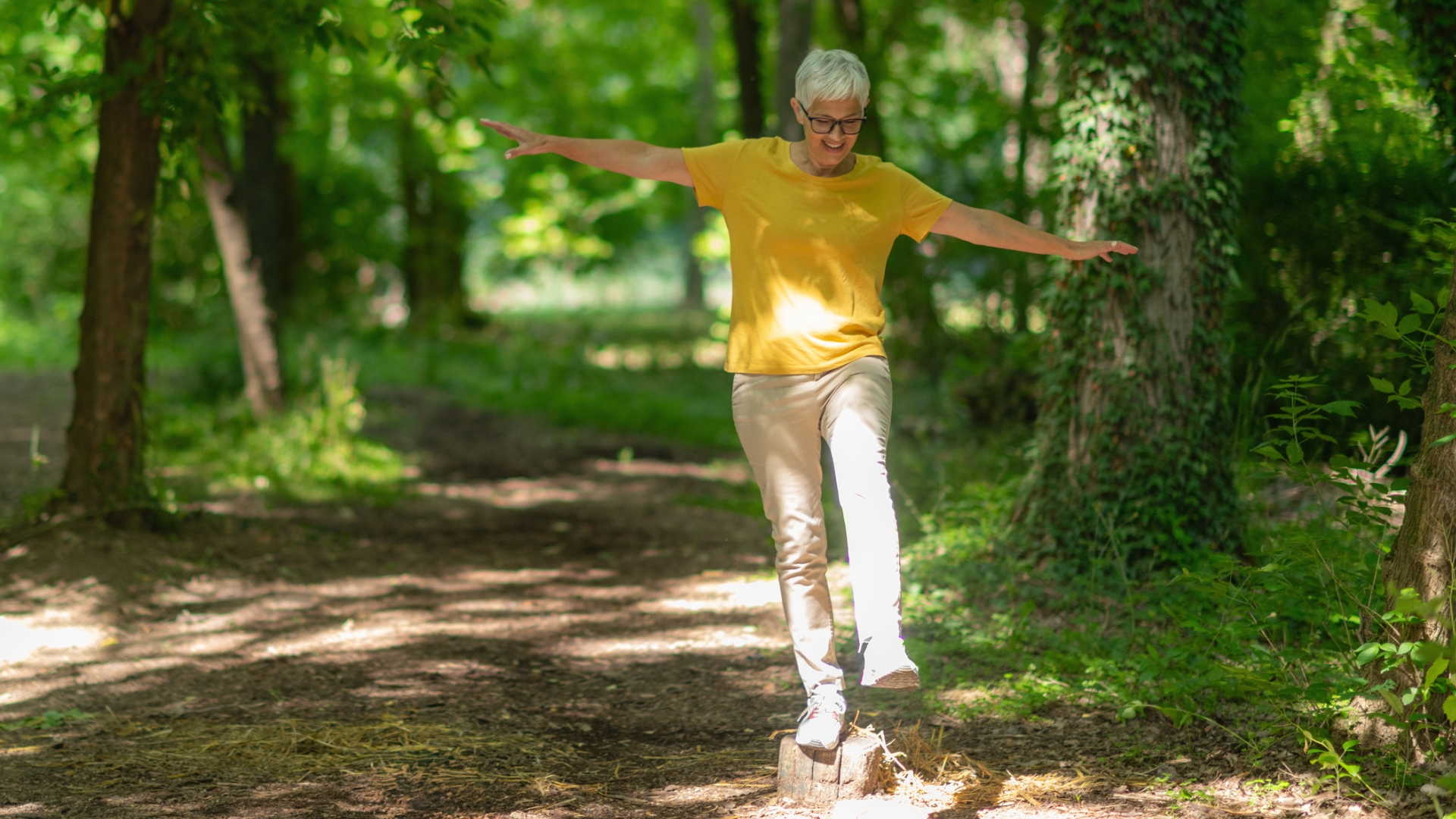
Did you know that falls are the leading cause of injury for adults aged 65 and older in the US? According to the Centers for Disease Control and Prevention, more than 14 million adults in this age group report falling each year, making falls the leading cause of fatal and nonfatal injuries among older adults.
“Balance and falls continue to grow as a challenge facing our seniors,” says Dr. RJ Williams, a physical therapist at FYZICAL Therapy and Balance Centers. “The complicating part is that it is multifactorial, meaning many aspects influence a person’s balance and risk of injury.”
While balance naturally declines with age, regular strength, flexibility and balance exercises can help maintain muscle stability and reduce the risk of falls. Williams shares three balance exercises you can practice daily for four to six weeks.
“These three exercises will help address different elements of balance, making you more resilient to falls.”
1. Play Clock Yourself
“This exercise builds multi-directional stepping and control in a reactive sense,” says Williams. “As your speed improves, you build the coordination to be more effective no matter the direction in which you lose your balance.”
How to do it:
- Download the Clock Yourself app or have a friend call out the numbers.
- Imagine standing in the center of a clock face with the numbers on the floor: 12 in front of you, six behind you, nine to your left, three to your right and all the other digits in between.
- When a number is called, step one foot toward it, then return to the center before the next number is called.
2. Play with equilibrium
“The second area to focus on is your inner ear and how it helps with equilibrium,” says Williams.
“To do this, you must ensure you are in a safe space or have someone with you who can help you stay steady as you progress,” says Williams.
- Level 1: Stand in a comfortable position and close your eyes for 10-30 seconds. If you feel unsteady or are swaying, practice until you feel comfortable and controlled.
- Level 2: Stand in a comfortable position, close your eyes and slowly move your head in different directions. Nod yes, shake no, and tilt each ear toward your shoulder. As you get more comfortable, gradually increase the speed of your head movements.
- Level 3: Once you have comfortably completed levels one and two, adopt the same comfortable standing position with your eyes closed. Begin stepping side to side, then progress to a heel-to-toe motion. The final stage is holding a single-leg stance.
3. Get up and down from the floor
“We never want to fall, but we must consider that it could happen,” says Williams. “By practicing getting up and down, we get two great benefits.
“First is the confidence that if we fall and aren’t seriously hurt, we can get back on our feet.
“Second, this exercise will build strength and muscle mass. These elements make us more resilient should we have a fall and less likely to break something if we hit the ground.”
How to do it:
- Stand near something stable like a chair. You can place chairs on either side of you if you wish.
- If you find kneeling is uncomfortable, place pillows or a yoga mat on the floor.
- Lower yourself gently to the ground and practice rolling from your belly to your back and vice versa.
- Use the chair for assistance as you push up into a lunge position.
- If you feel fatigued, instead of standing all the way up, lift yourself just enough to sit in the chair before attempting to stand fully when you’re ready.
If you are seriously concerned about your balance, it may be worth consulting a balance-trained physical therapist for an assessment.







